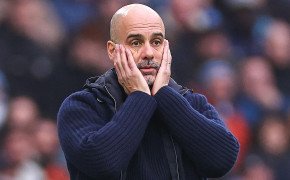Peru’s captain, centre-forward and perhaps their one genuinely world-class player finds himself in the middle of a legal gun fight this week.
Last November Paolo Guerrero tested positive, his urine sample showing traces of a substance found in the coca leaf. FIFA banned him for a year, which would rule him out of the 2018 World Cup, potentially the high point of his long career.
A few weeks later, on appeal, FIFA reduced the ban to six months. The argument of the defence carried obvious weight; the amount of the banned substance was small, ruling out cocaine consumption. The most likely explanation was that he had drunk some tea prepared in a contaminated kettle.
The ban would run out in on May 3rd, giving him time to get in shape for Russia 2018. “The World Cup is assured,” said one of Guerrero’s lawyers when the ban was cut. “Now we will go to the Court of Arbitration for Sport (CAS) and push for no suspension.”
The hope, then, was the case might be heard by the end of January, freeing him for the start of the season in Brazil, where he plays for Flamengo, and giving him more time to get in rhythm for Russia.
Instead, the date was set for this Thursday, six months to the day after he was first suspended. This means that even if Guerrero’s appeal is successful, he will have gained nothing. If he is declared completely innocent, he will still have spent six months in which he was unable to play.
This, however, does not render the appeal a purely academic matter. The stakes are very high. Because CAS will not only hear Guerrero’s side of the argument. They will also listed to an appeal from WADA, the world anti-doping agency, who are pushing for the ban to be increased to two years. The principle they are trying to uphold is that the athlete is responsible for any substance that enters his body. Should the WADA position prevail, then it will not only cost Guerrero the World Cup. It will probably send him into retirement. At the age of 34, it is hard to see how he could return to top level football after a two year lay off.
These, then, are tense times for Guerrero, and tense too for Peru – although the situation does not look quite as desperate as it did a few months ago.
Win cash prizes for free with our competition!
| User |
Total tips |
Profit | 1 | Yield | Expected prize |
 Laghu Yadav
Laghu Yadav
|
129
|
176734 | 2 |
+5.85%
|
500 EUR |
 BateCrew
BateCrew
|
109
|
127479 | 3 |
+6.47%
|
250 EUR |
 pimidor
pimidor
|
39
|
118107 | 4 |
+12.16%
|
125 EUR |
 LuckyZara
LuckyZara
|
37
|
95340 | 5 |
+18.50%
|
75 EUR |
 stasibet
stasibet
|
58
|
63168 | 6 |
+7.20%
|
50 EUR |
Don't miss out - join our April Tipster Competition today
Peru returned to the World Cup for the first time since 1982 – some 18 months before Guerrero was born. One of his final touches of the ball for the national team was a free-kick in the last round of the South American qualifiers against Colombia. It was indirect, and so a goal would not have counted had the ball gone straight in. But opposing keeper David Ospina made an attempt to save, and got a touch on the ball as it went past him. This was the moment Peru made it through to the play-off against New Zealand.
From then on, they were without Guerrero, their all-time top scorer. Alarm bells were ringing. But, with some nervy moments along the way, they beat New Zealand 2-0 on aggregate. Now coach Ricardo Gareca could prepare for Russia – and he had to bear in mind the possibility of Guerrero’s absence from the tournament.
The friendlies in March, then, could hardly have gone better. Peru met European opposition for the first time in almost four years, and recorded morale-boosting wins against Croatia (2-0) and Iceland (3-1).
Jefferson Farfan, an old school mate of Guerrero, has made a triumphant return to the national team. In Peru’s 4-2-3-1 formation, he can feature as a support striker anywhere across the line of three; and he can also be used up front, where he does not have the same physical presence as Guerrero, but offers more mobility, with the capability of dropping back to add to the midfield marking.
Peru showed – to themselves as much as anyone else – that they are not completely dependent on Guerrero. They would love to count on him in Russia. But if need be they can get by without him. They have now equalled the Peruvian national team’s all-time record for number of matches unbeaten – and the last four crunch games have not featured the centre-forward once thought of as indispensable.















